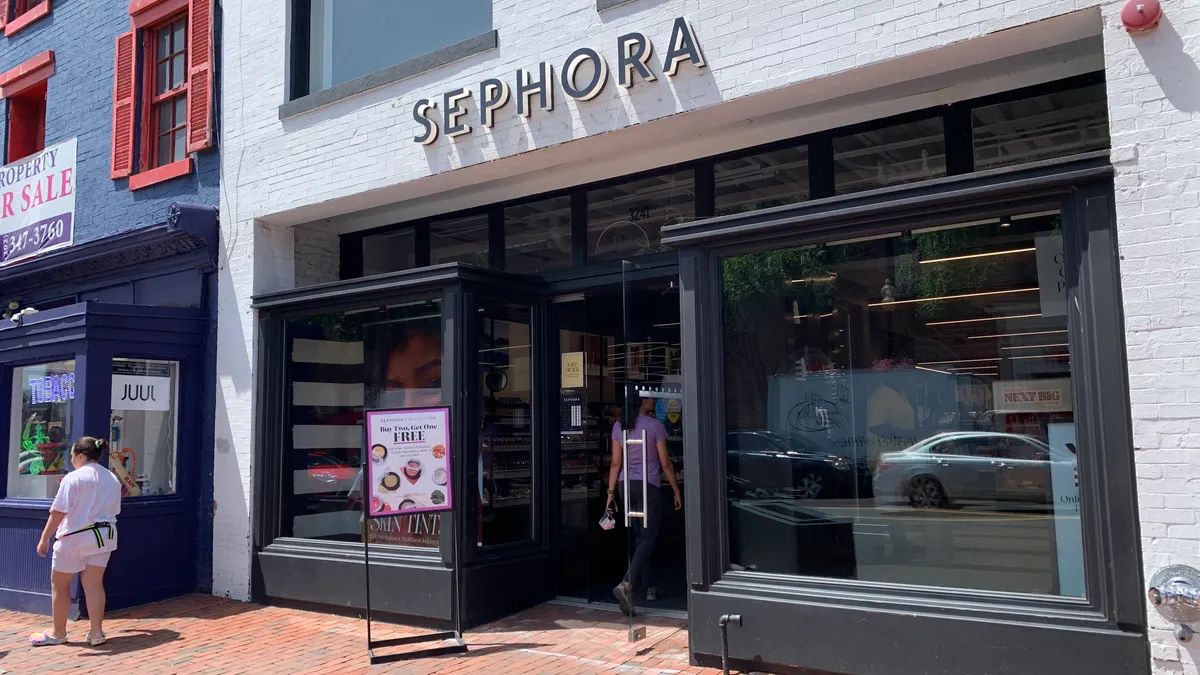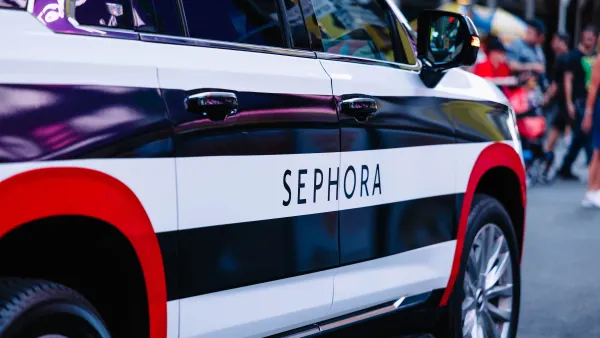Dive Brief:
-
Just over a year after signing the Fifteen Percent Pledge, Sephora is reporting progress on that commitment, and its other diversity, equity and inclusion initiatives. As announced in January, Sephora is on track to double the number of Black-owned brands in its assortment by the end of 2021.
-
The retailer had just eight Black-owned brands a year ago, but the assortment has grown to include the likes of Briogeo, Bread Beauty Supply, Topicals and Danessa Myricks Beauty, according to the retailer's report. The company also expects to reach the 15% benchmark in prestige hair care this year.
-
Sephora has also ramped up its marketing around Black-owned brands, with those companies accounting for 15% of its social and digital content, up from 11% last year. As discussed at the beginning of the year, Sephora launched a specific webpage promoting Black-owned brands it carries, and has begun running quarterly campaigns around Black-owned brands.
Dive Insight:
Sephora in January rolled out a plan for tackling racial bias that spanned everything from marketing and merchandising to in-store experience and operations, and talent and inclusivity. The retailer's progress report reveals what it has accomplished so far on its goals, and where it still has to go.
In terms of a more diverse assortment, the beauty company said it has made progress on increasing the number of Black-owned brands it carries, and plans to launch "several" new Black-owned brands in the fall, including Fashion Fair and Hyper Skin. As it began with just eight, the end of the year should mean at least 16 Black-owned brands will be carried by Sephora, and the retailer noted in its report that it actually expects to end the year with more than double that initial amount.
Marketing, too, has been a point of focus for the retailer. In addition to increasing the diversity of its campaigns, Sephora said Wednesday that its influencer group is 79% people of color, an increase of 61% since 2019. The retailer is also dedicated to reaching more Latinx customers by doubling the number of Spanish-language YouTube videos it produces each month, and including more Spanish-speaking influencers in its program.
The last progress point Sephora touches on in its report is employee diversity. The retailer reported a year-over-year increase of one percentage point in the amount of people of color in its total workforce (64%) and the number of women in its total workforce (83%), while the amount of Black or African American employees grew by two percentage points. In terms of leadership roles, Black or African American leadership across stores, distribution centers and corporate offices grew from 6% to 9%, while Black or African American store director representation increased from 6% to 11%. Leadership diversity has been particularly slow to improve in the retail industry over the years.
In pursuing a more diverse merchandise assortment and marketing strategy, Sephora is carving much the same path as Ulta, which announced in February that it would double its Black-owned brands by year's end and signed the Fifteen Percent Pledge about a year after Sephora. Improving diversity at Ulta was a focus point of former Ulta CEO Mary Dillon, and will likely continue to be so under new CEO Dave Kimbell.













